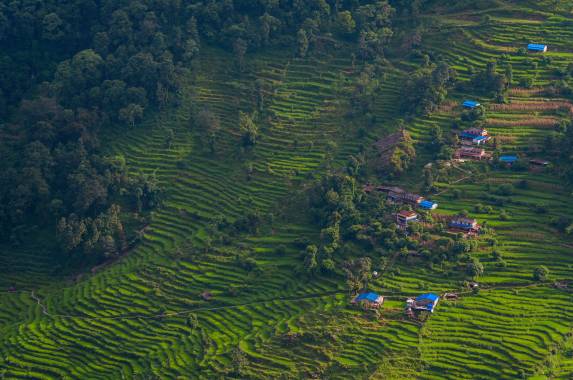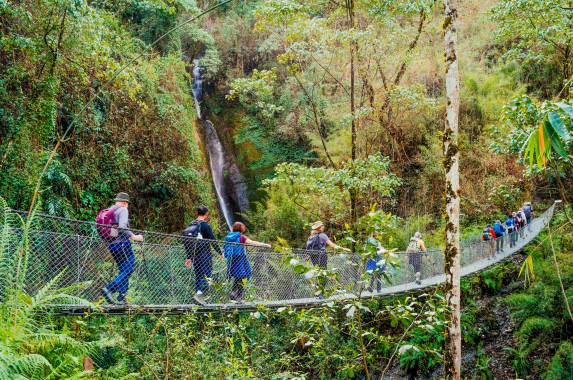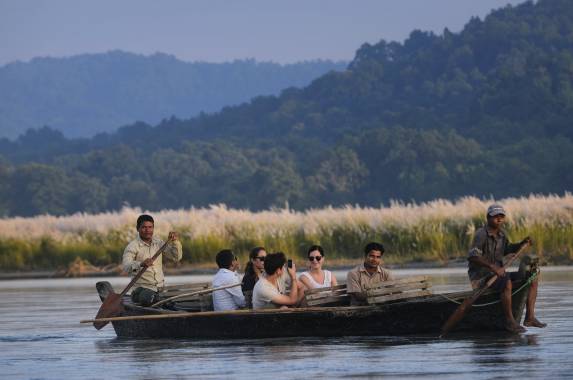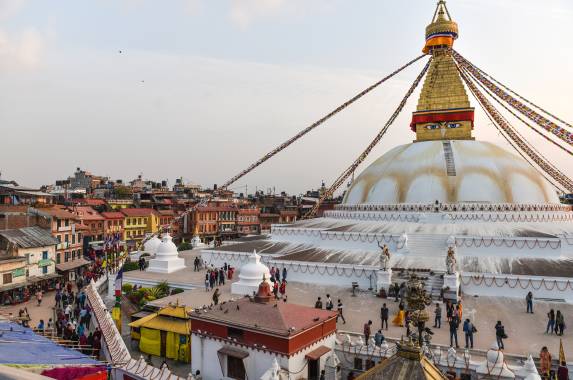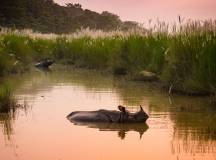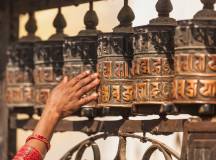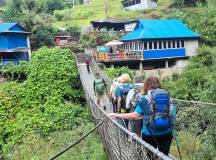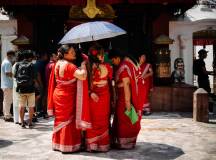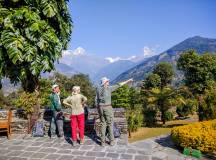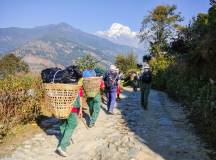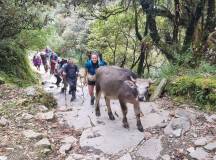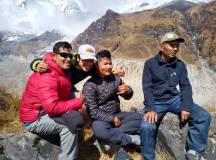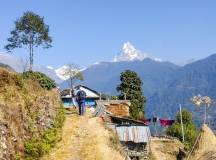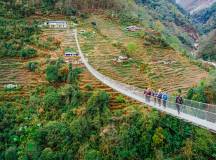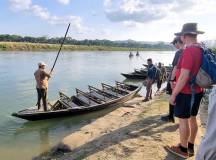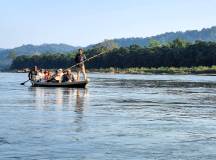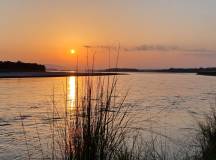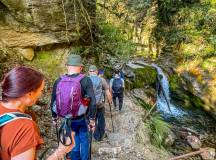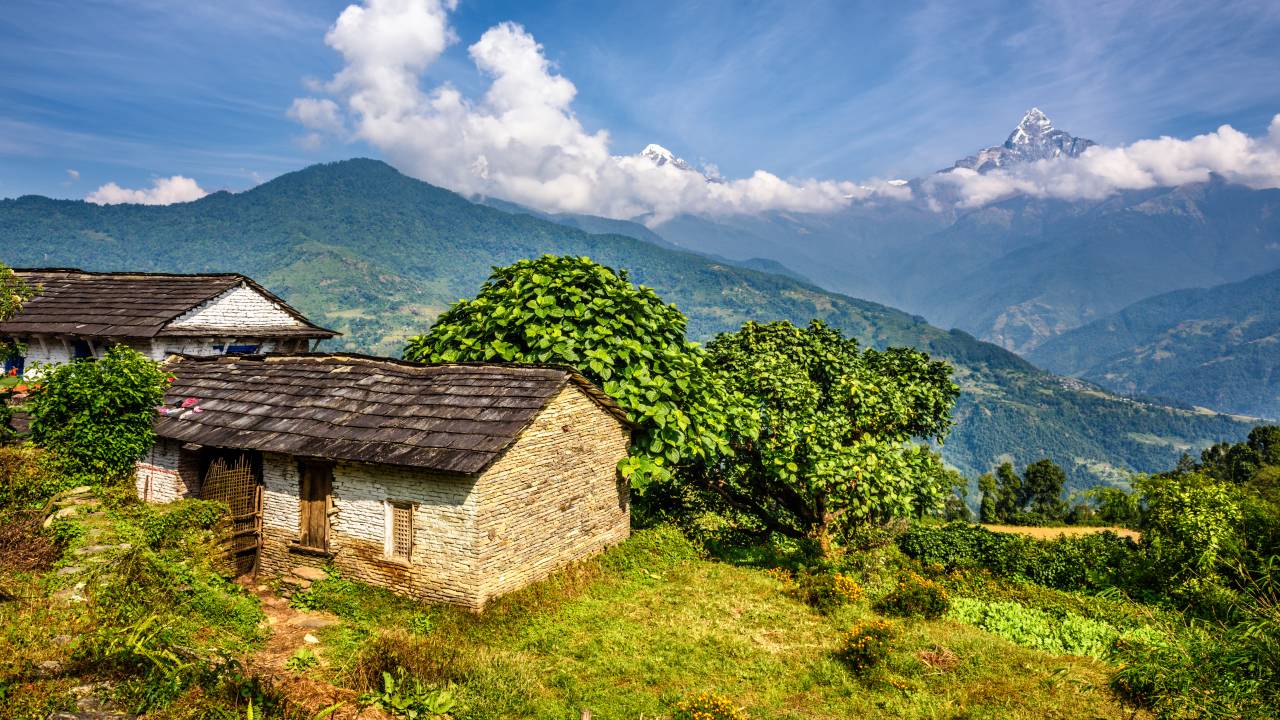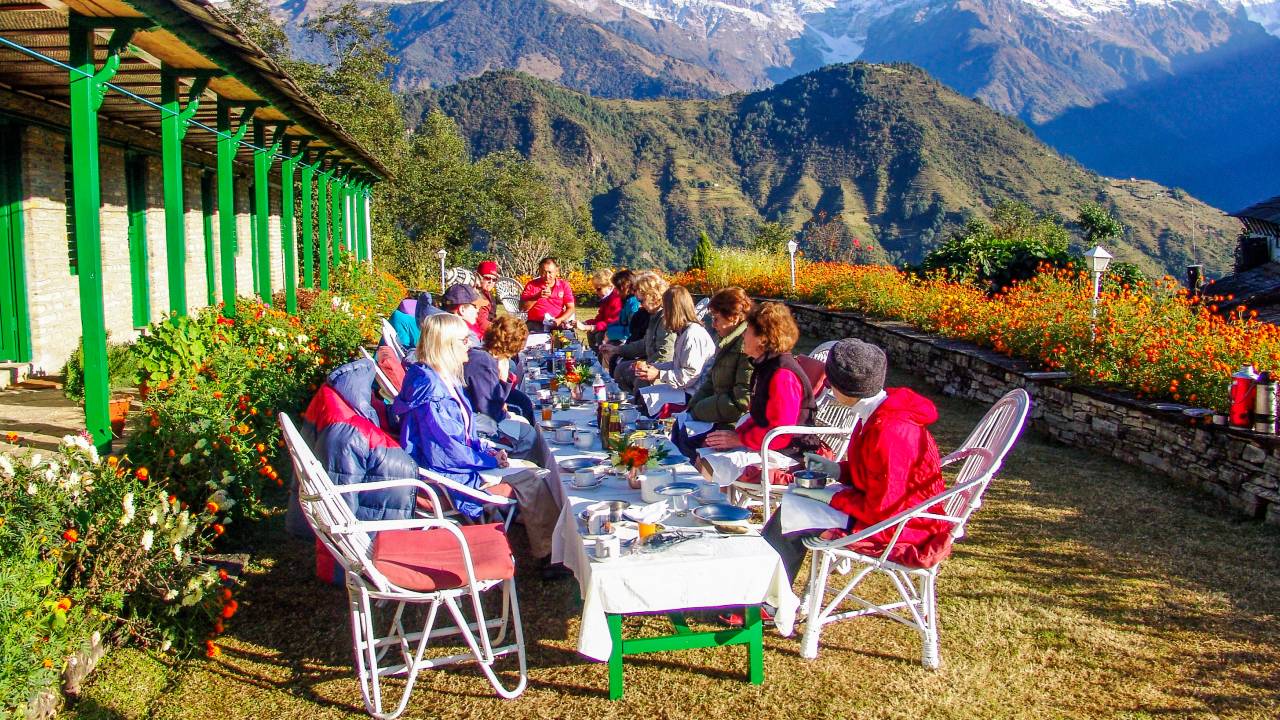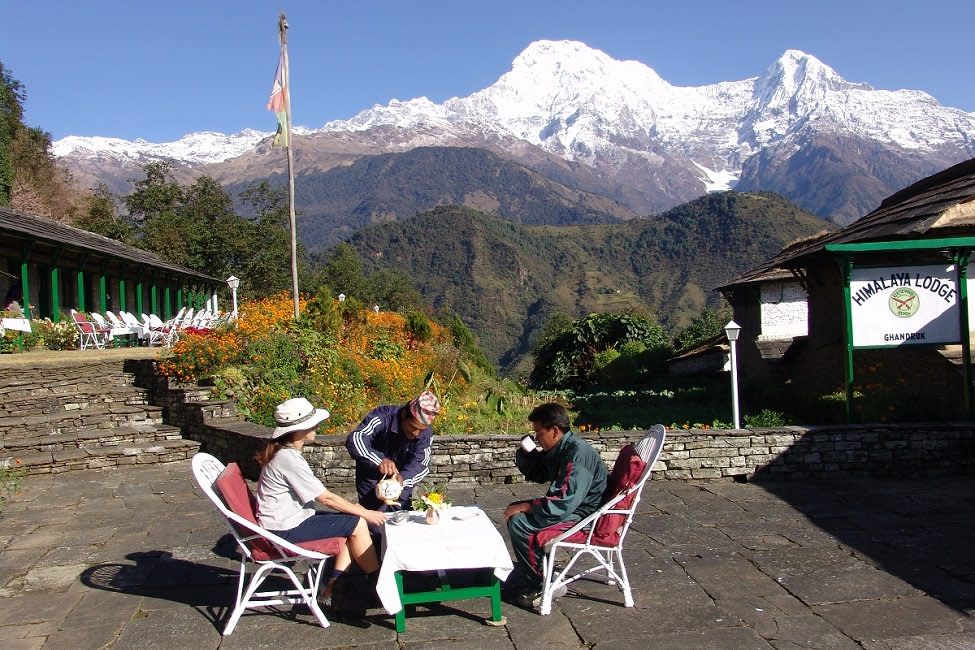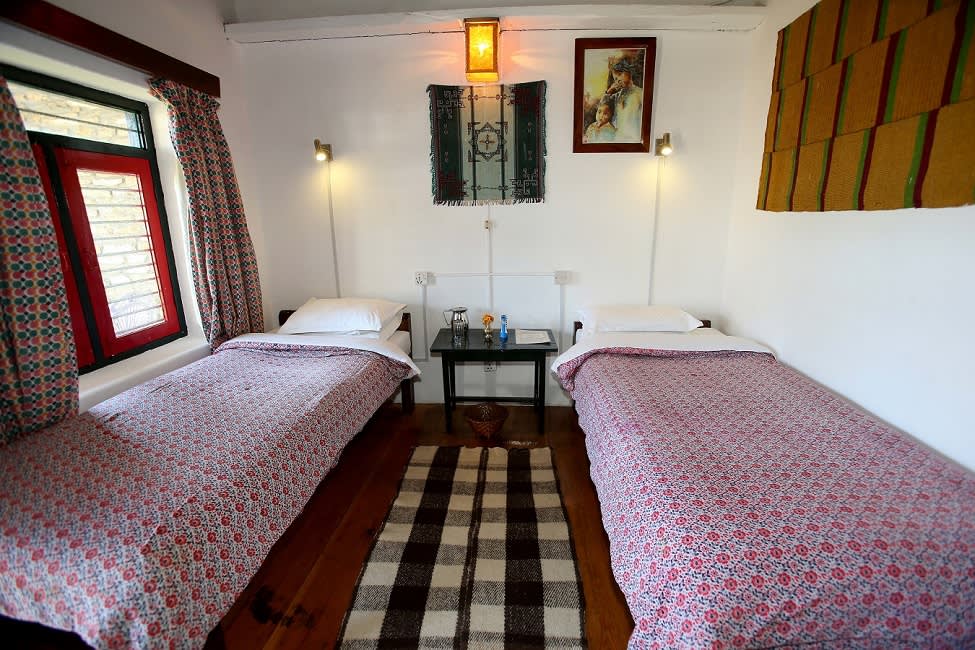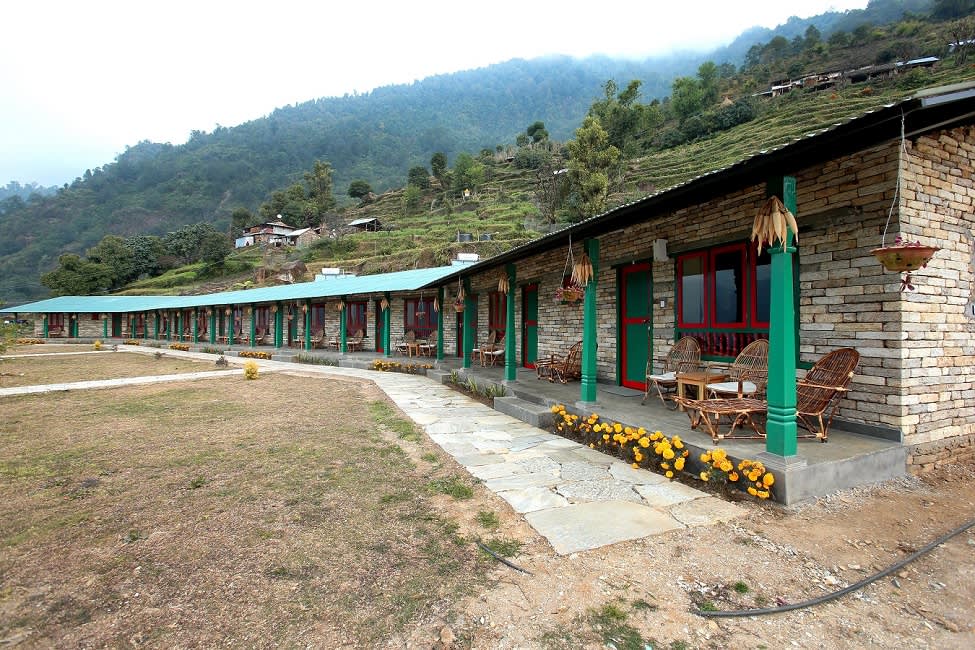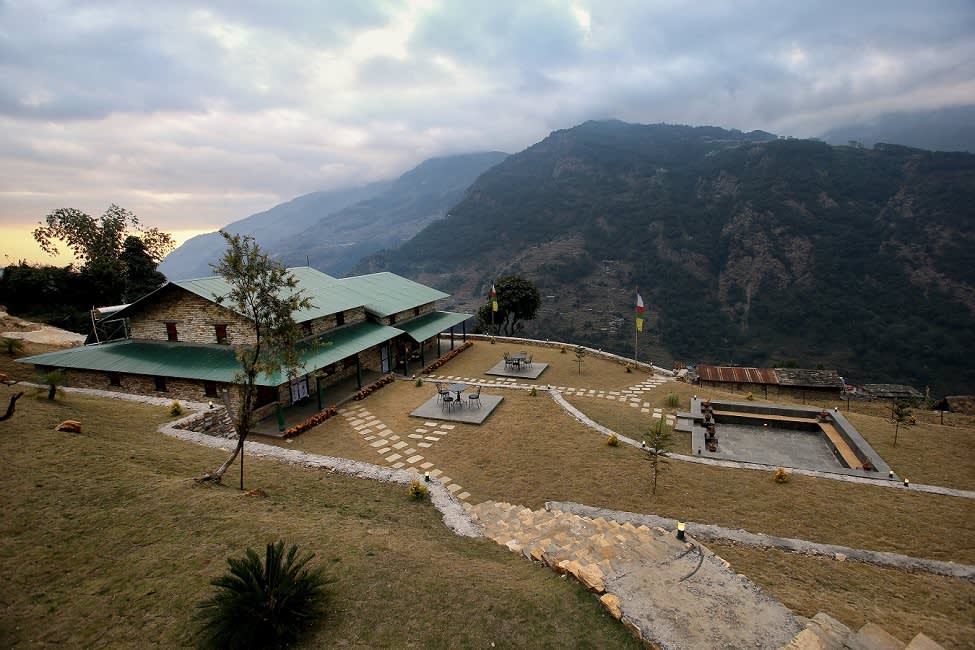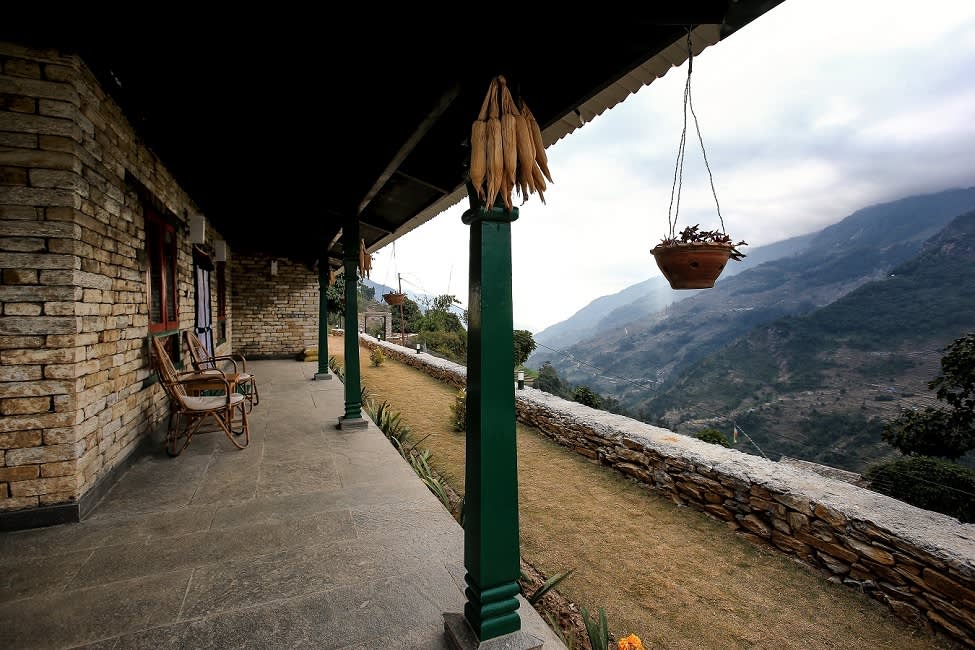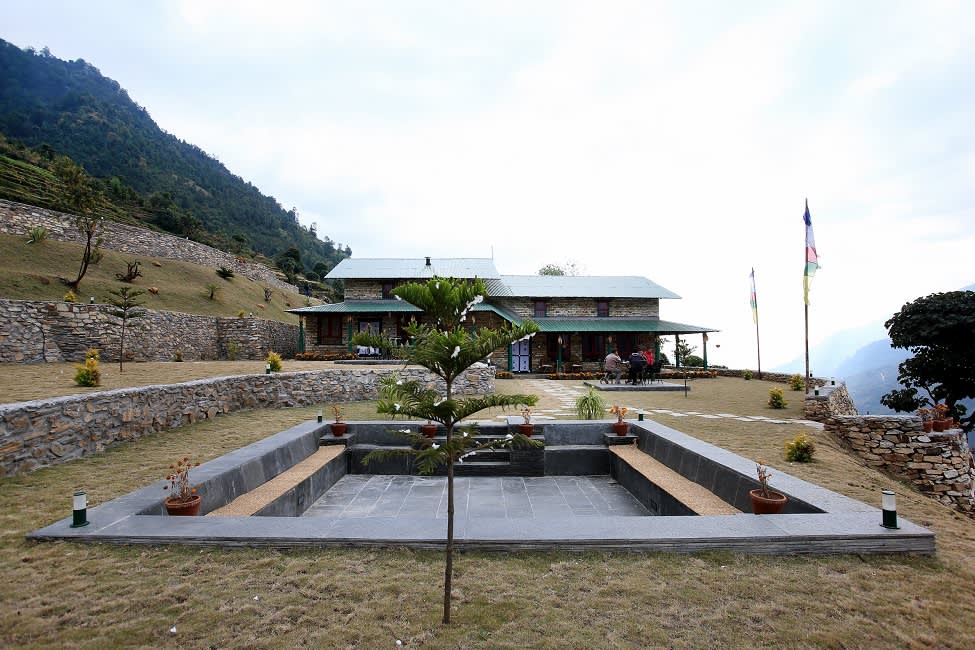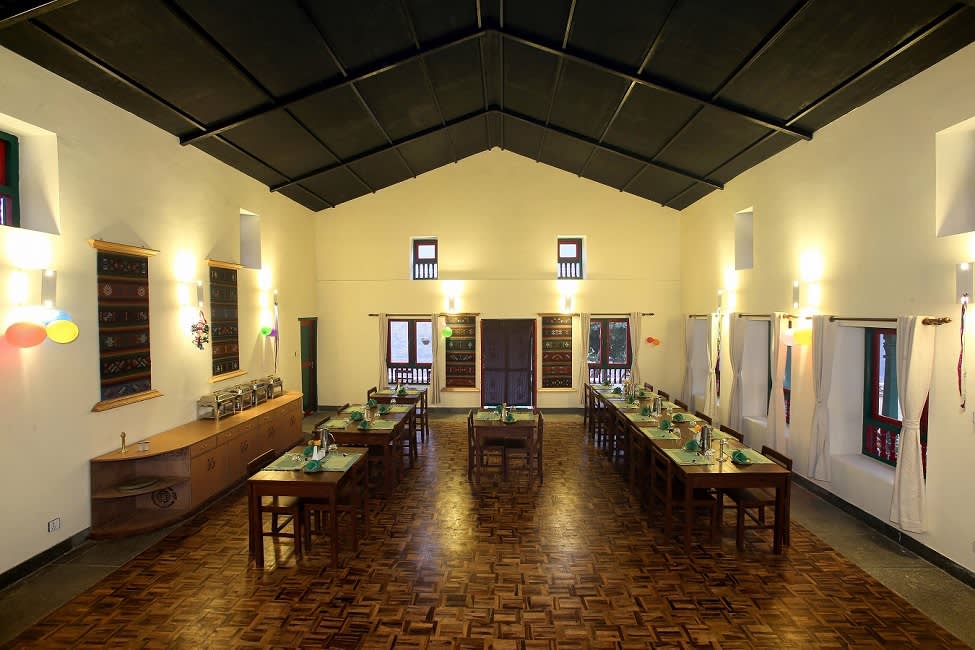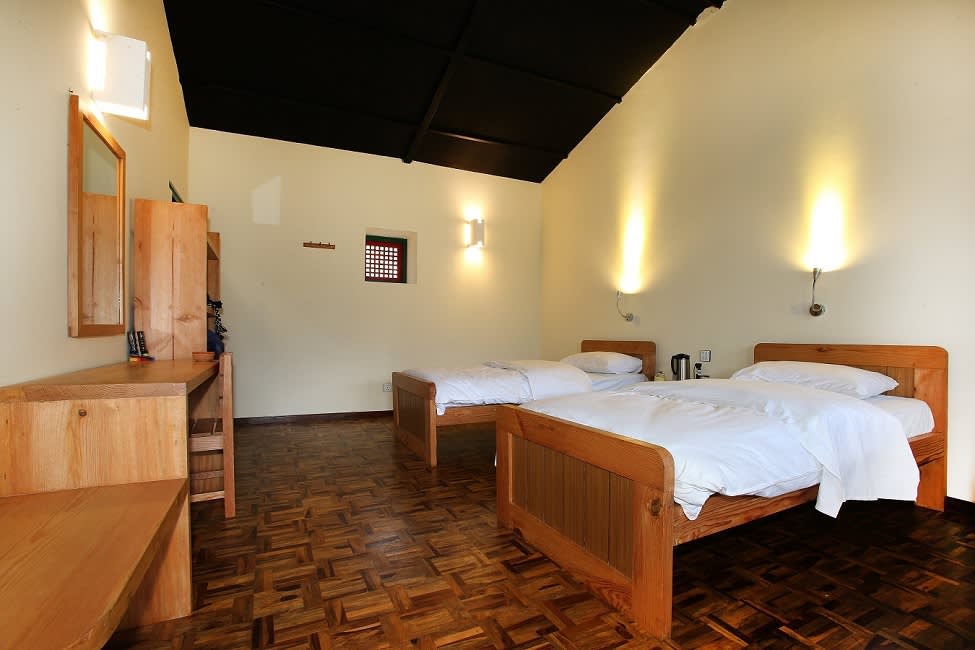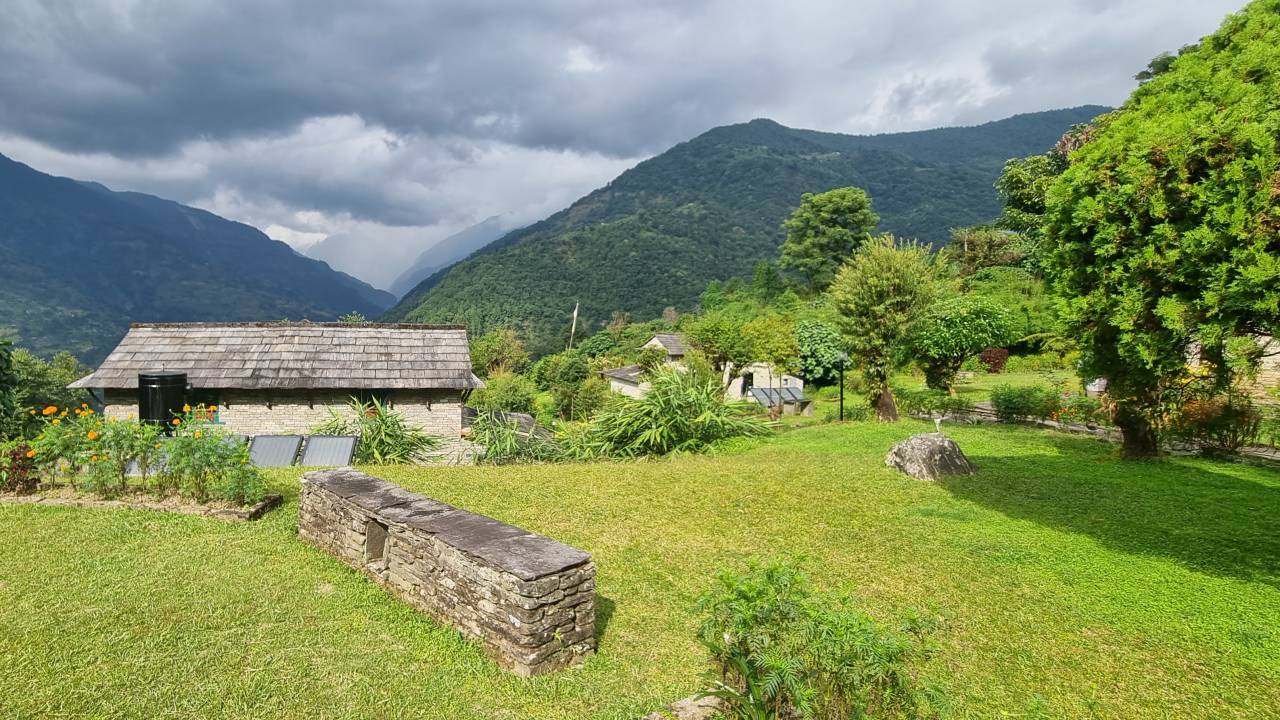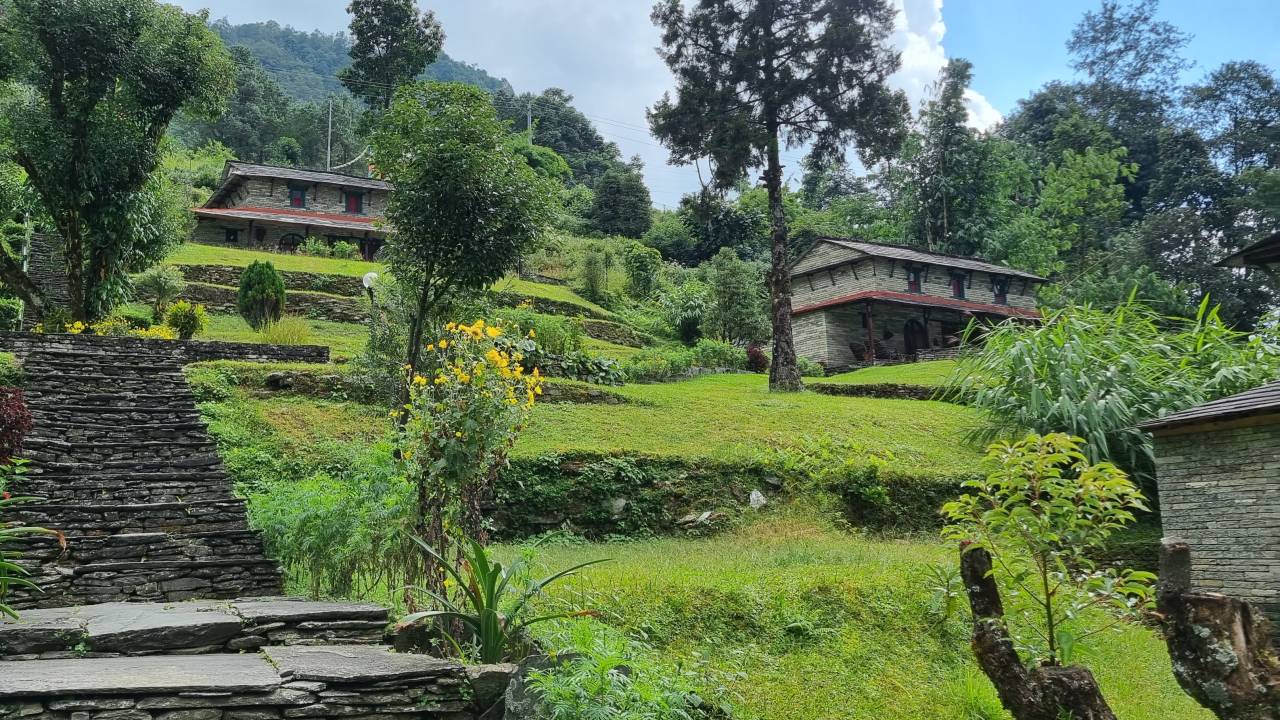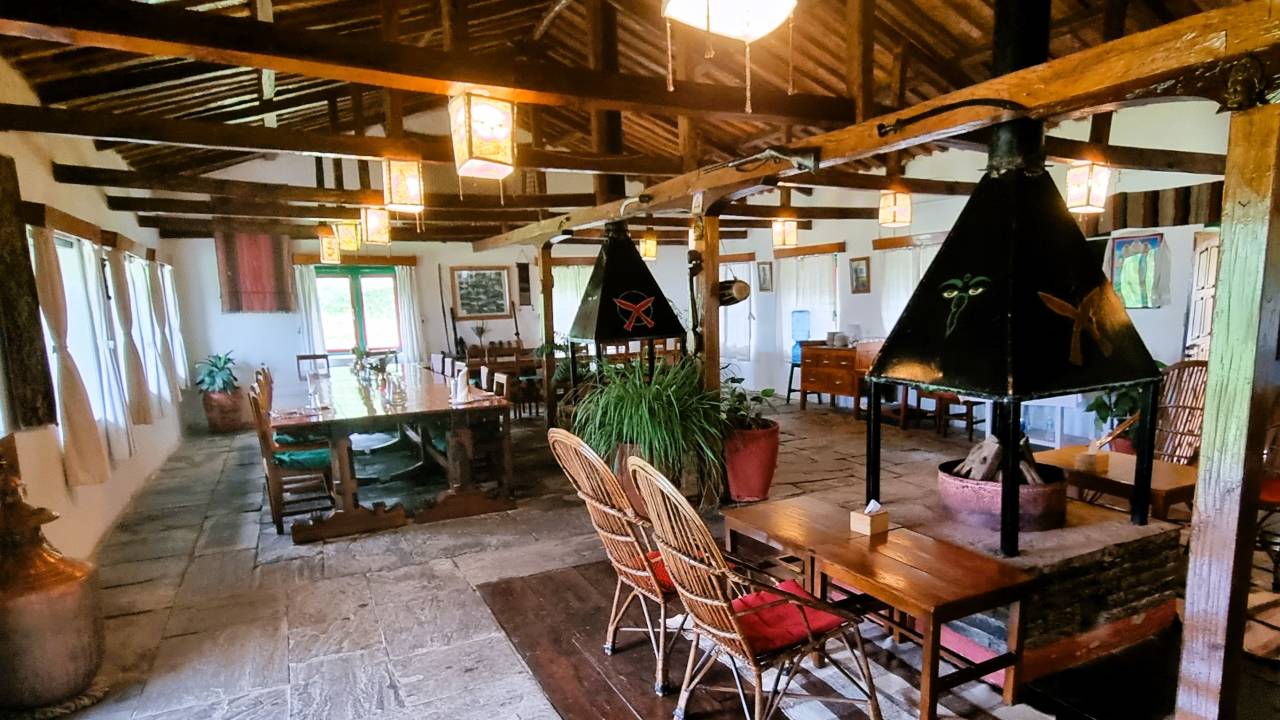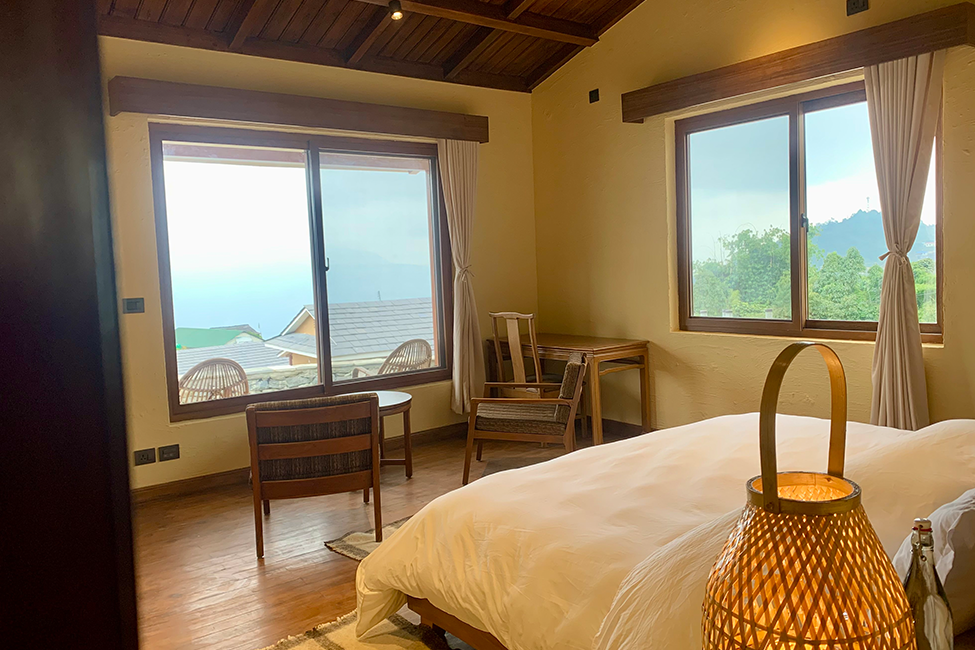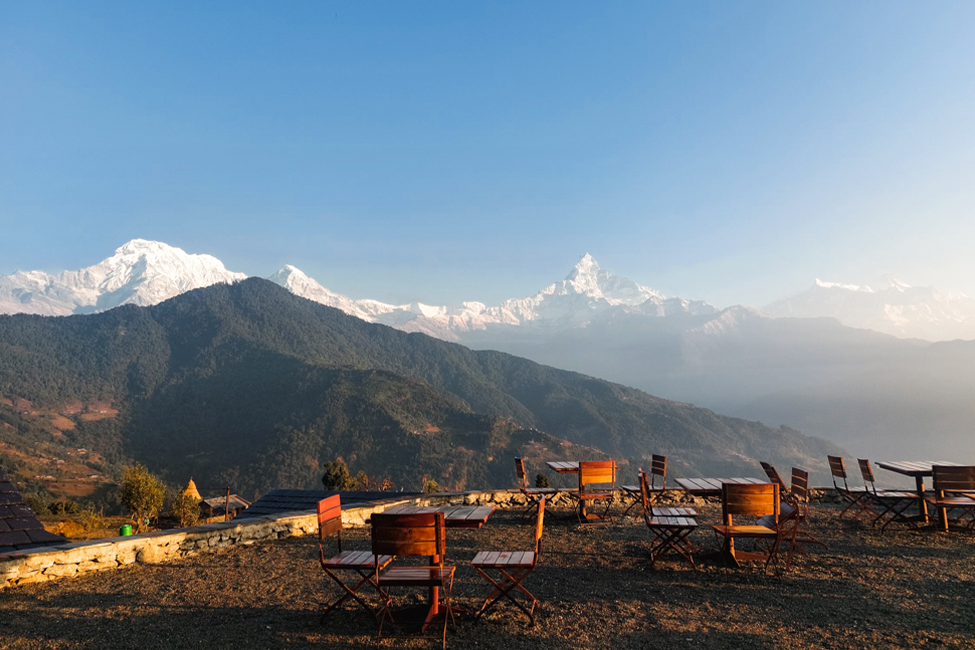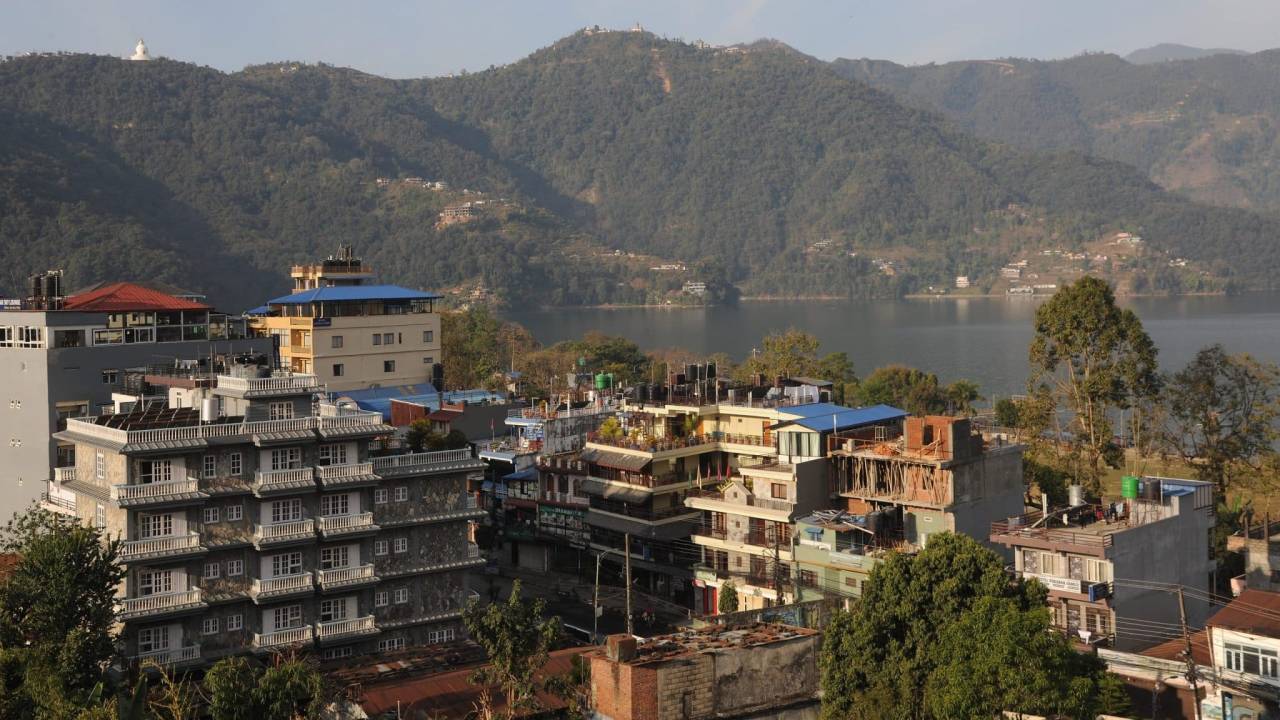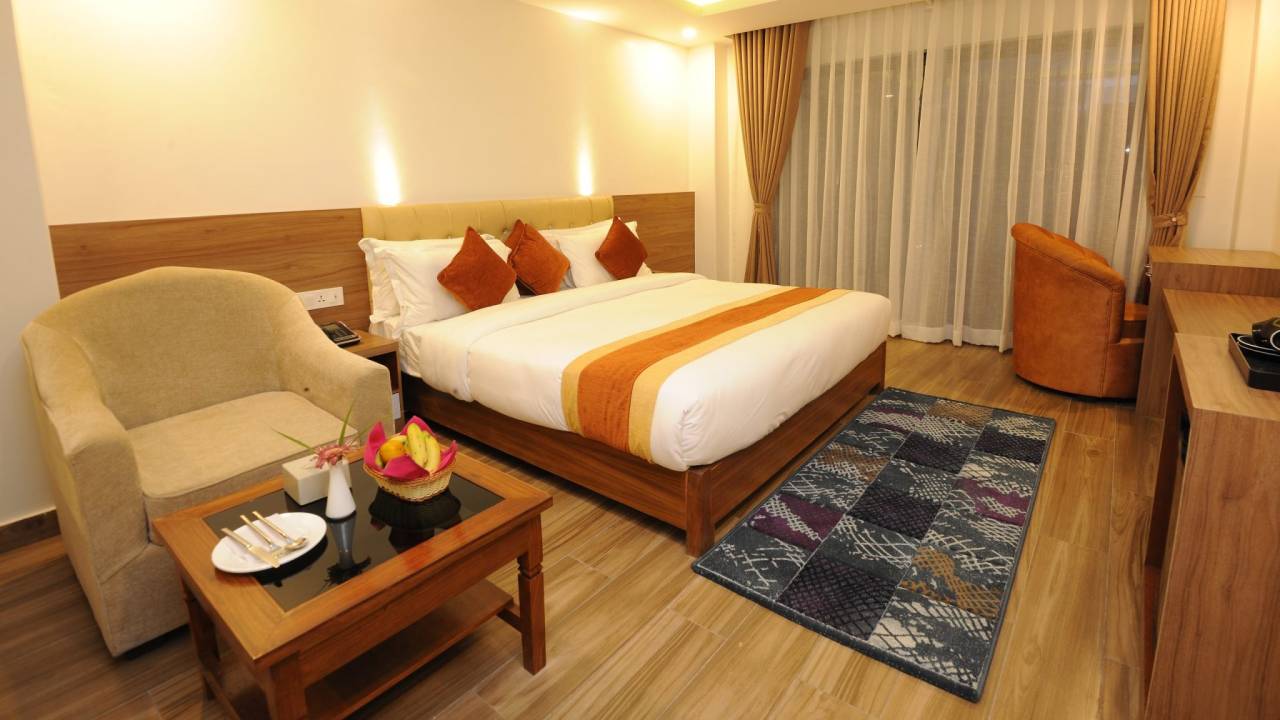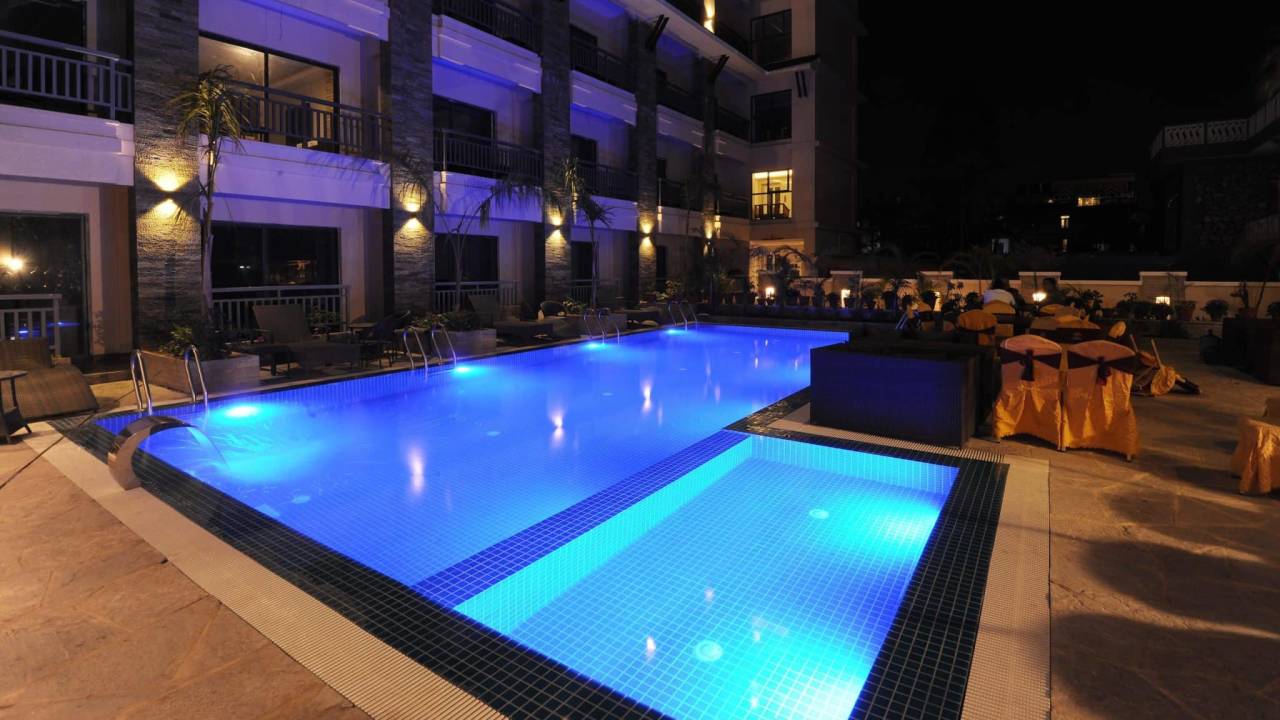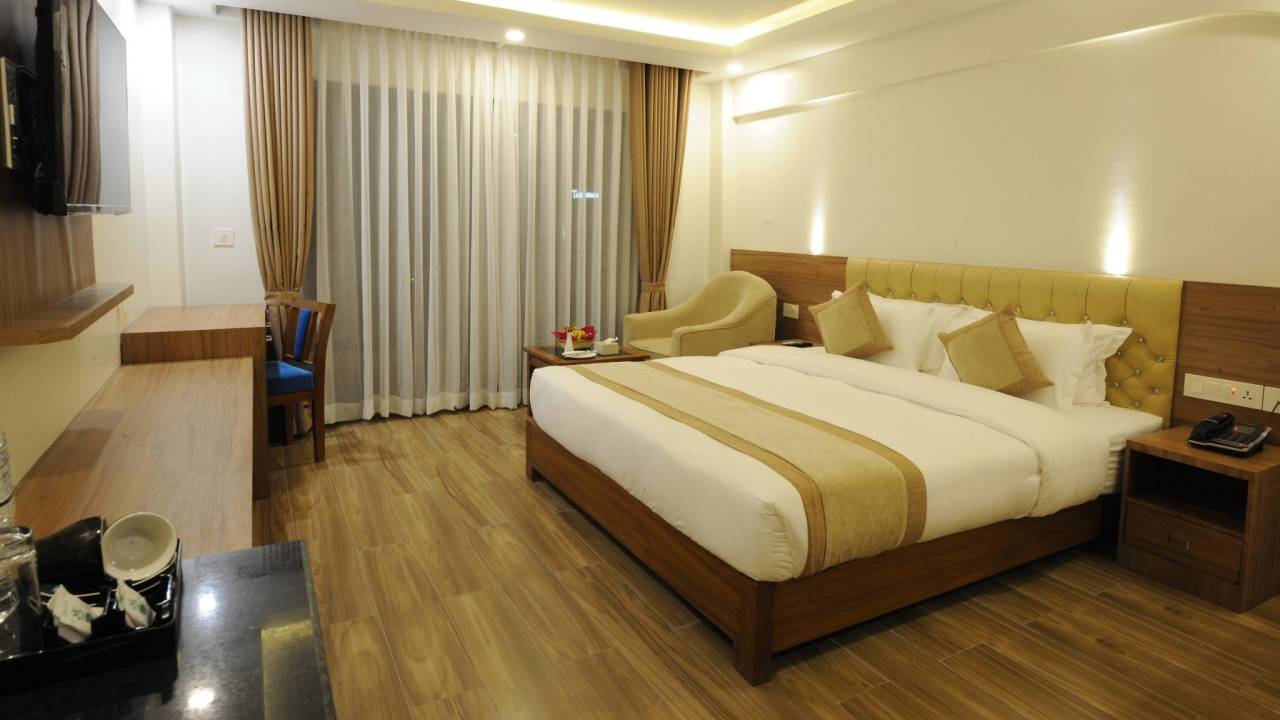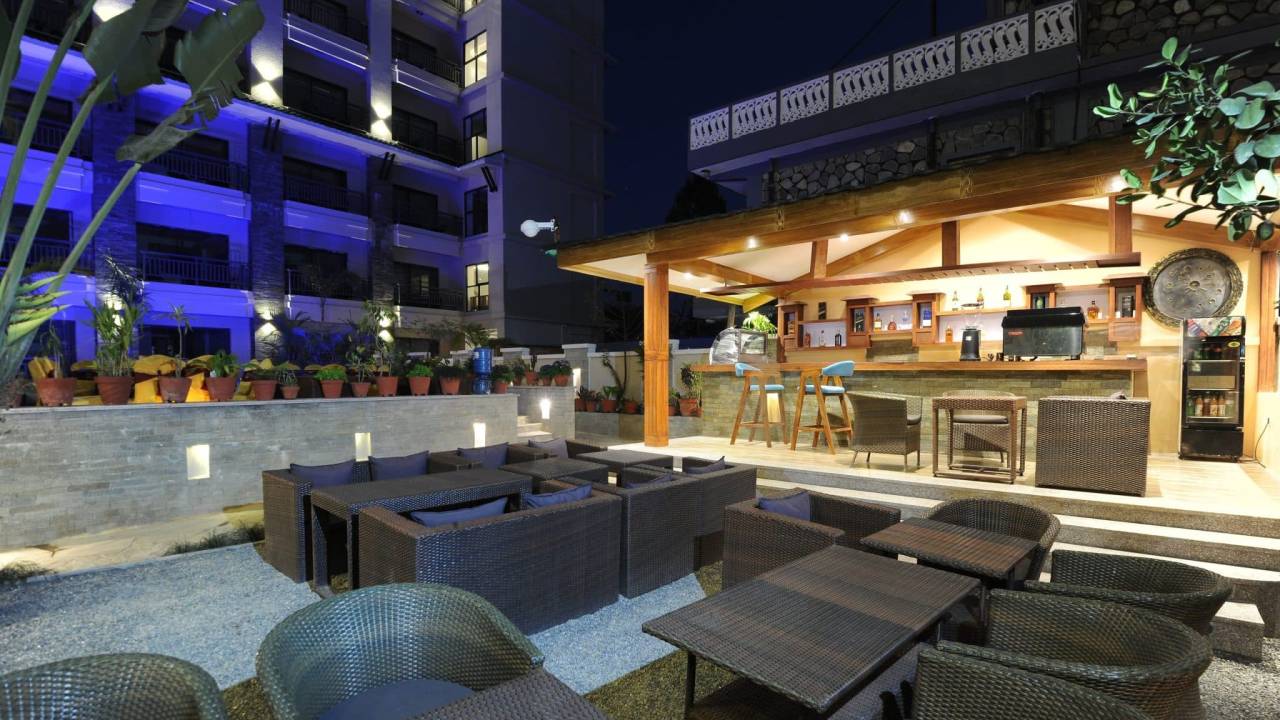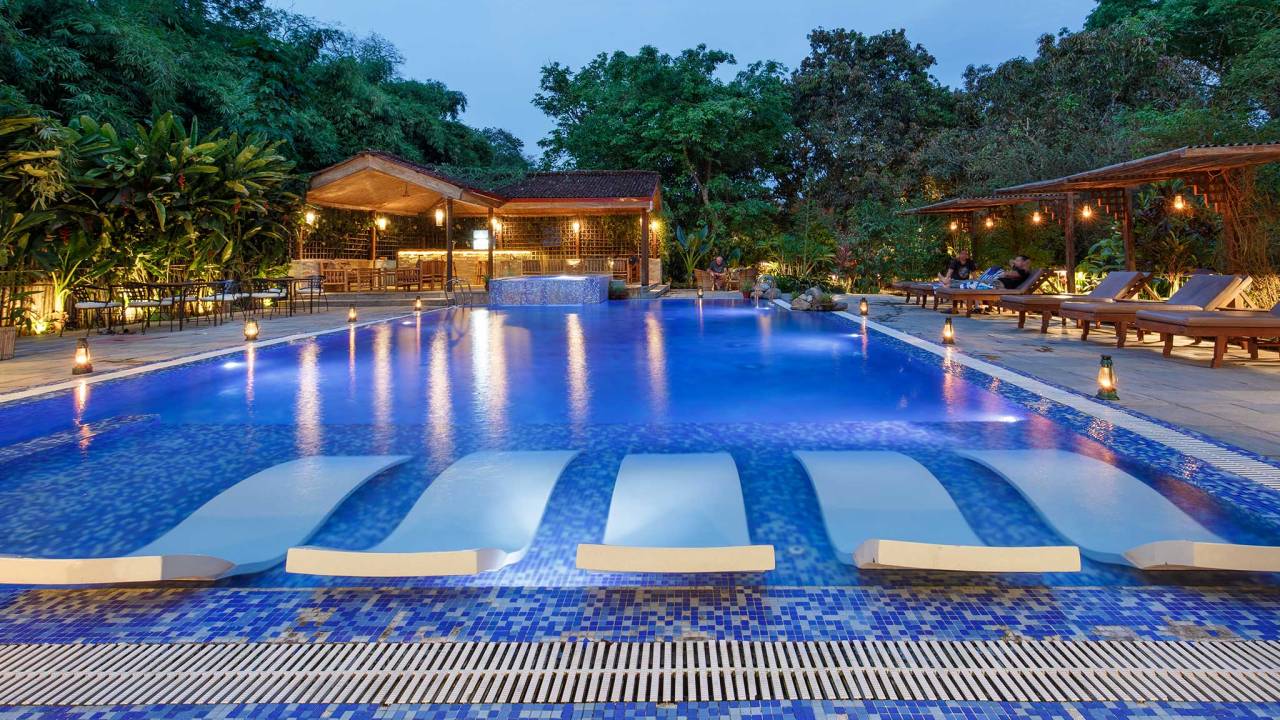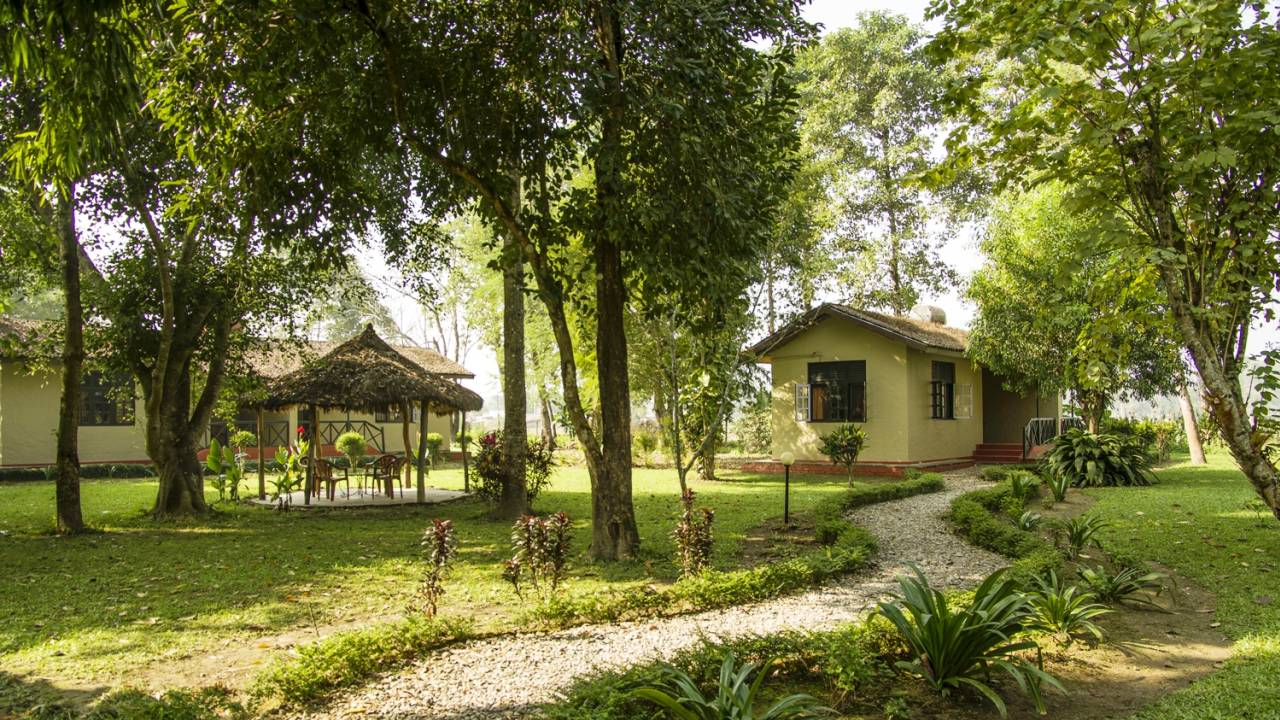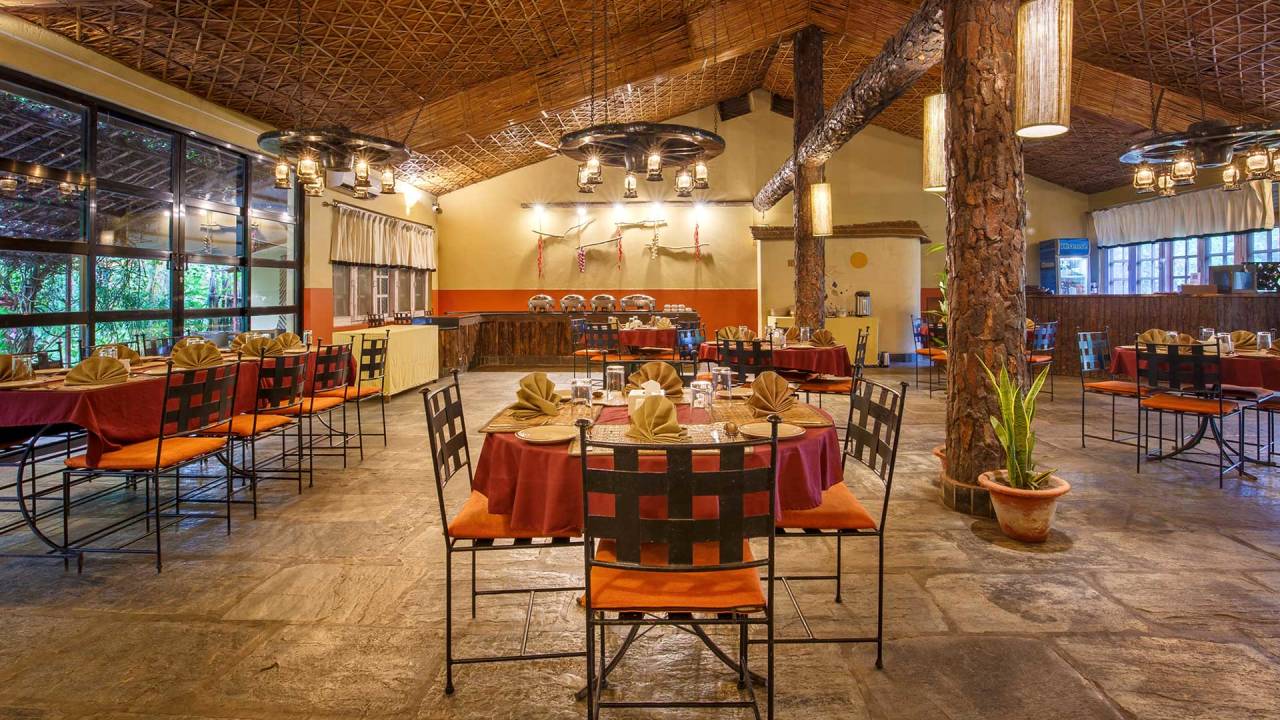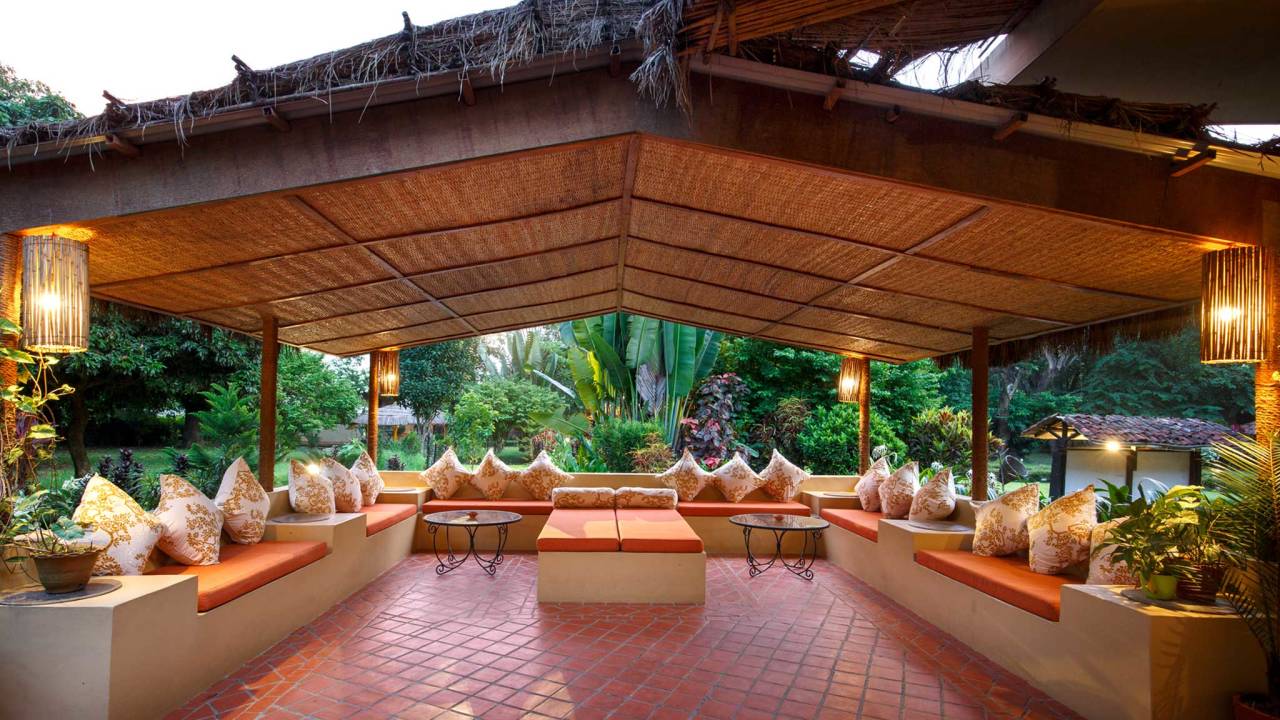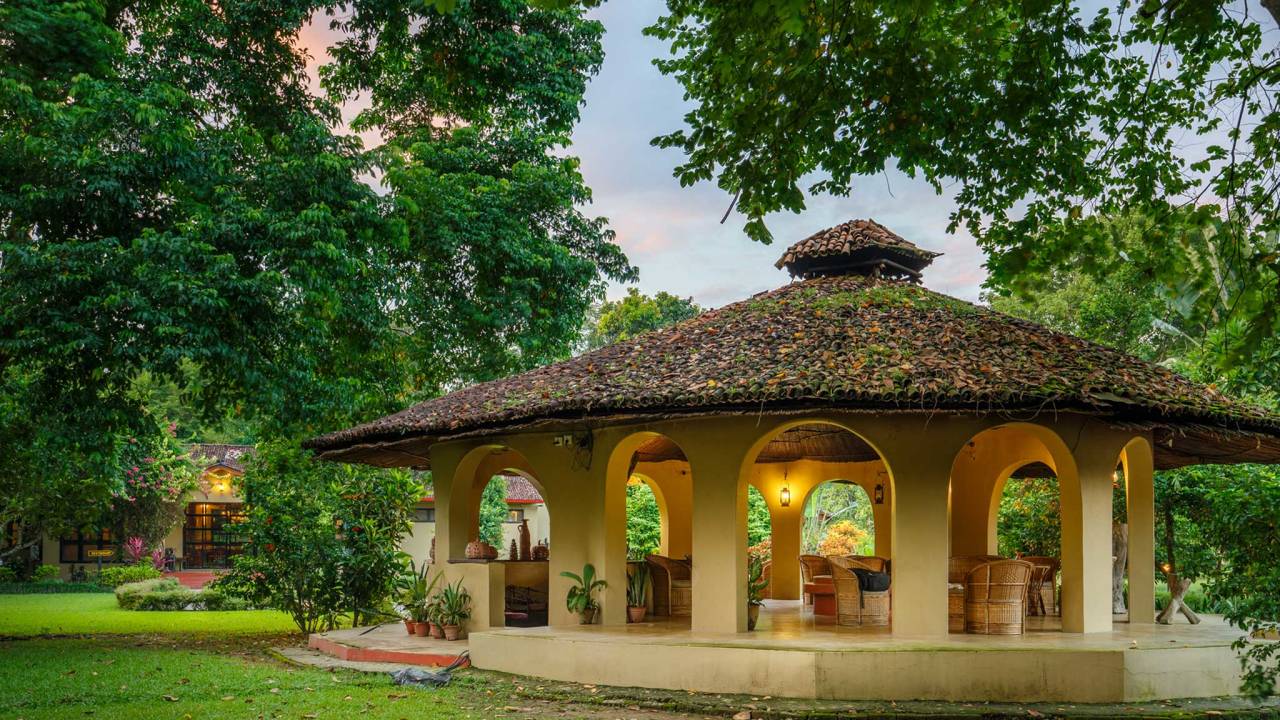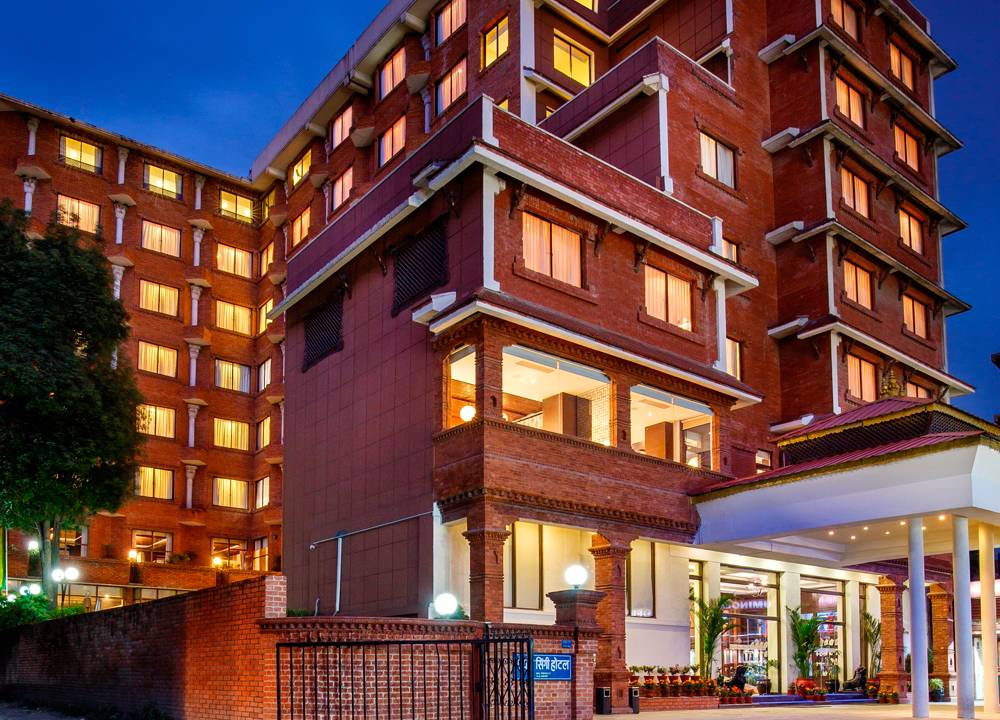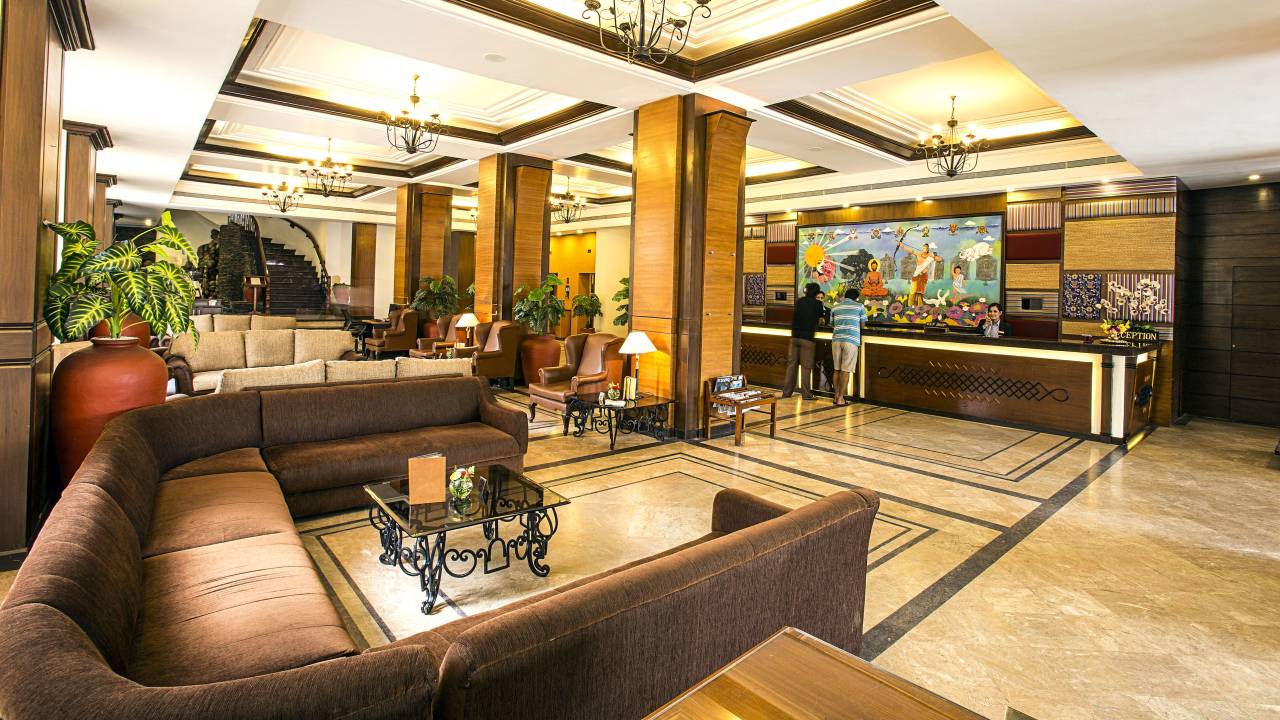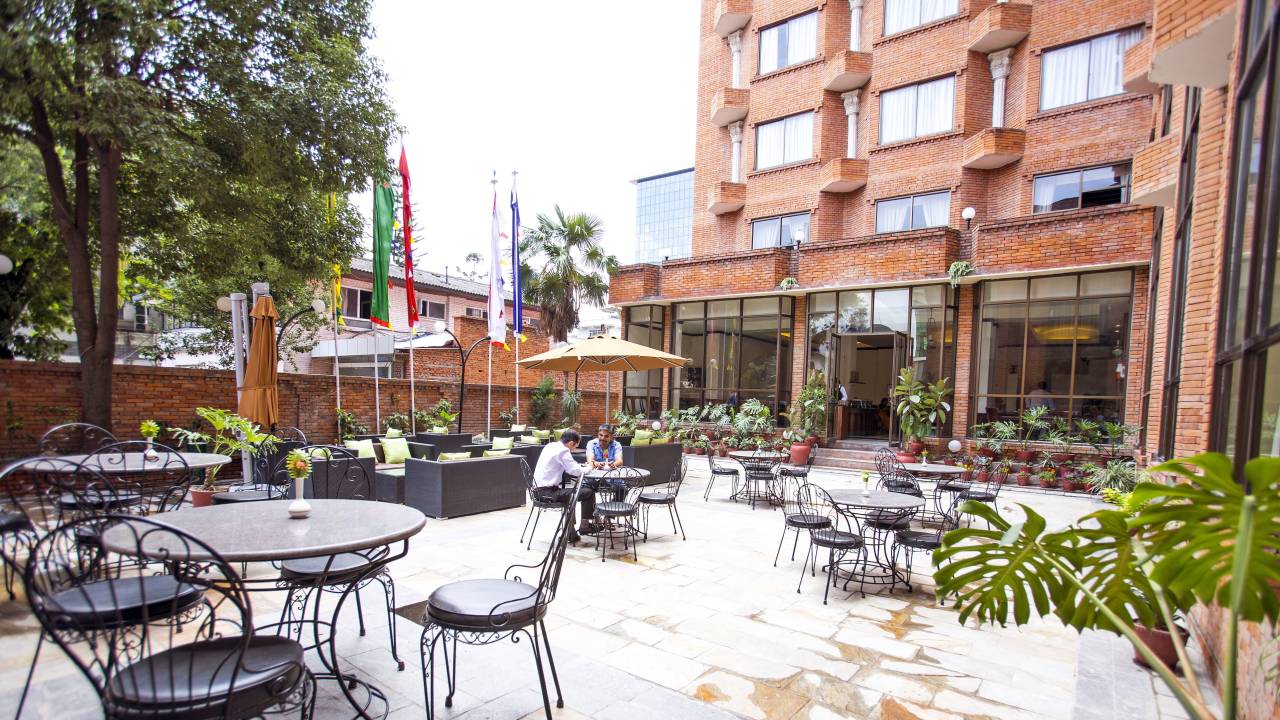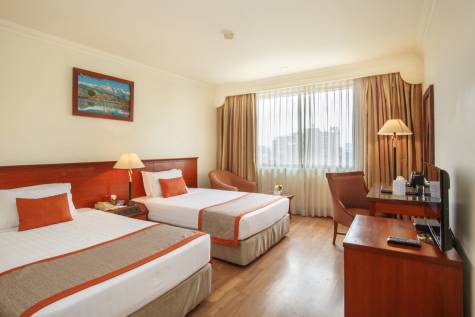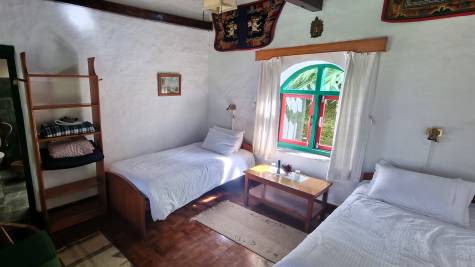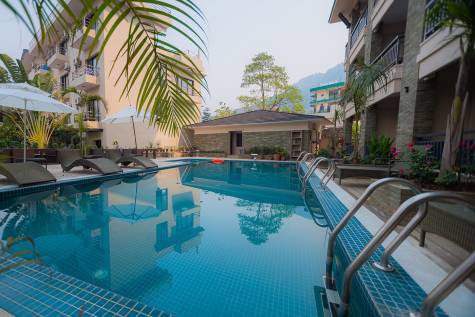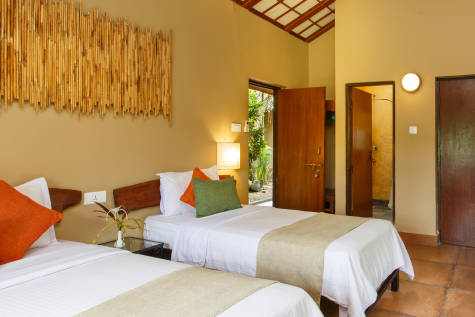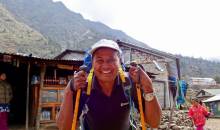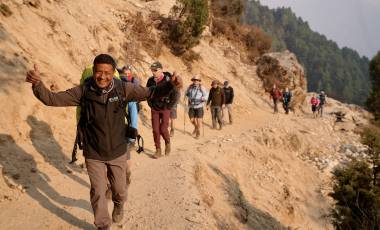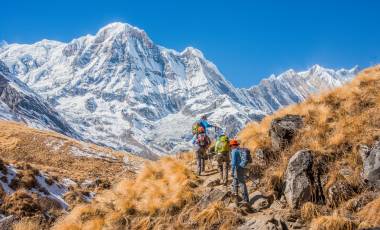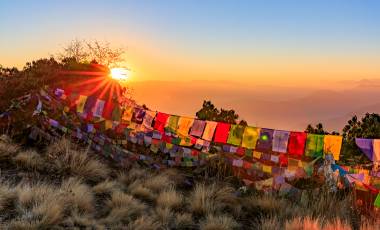- Combine a multi-day trek in the Annapurna foothills with wildlife watching in Chitwan
- Stay in some of the best mountain lodges in the Himalaya with views of iconic peaks
- Unwind after our trek with a stay in the lakeside city of Pokhara
- Visit a Tibetan refugee village and learn how to make traditional momo dumplings
- Game drive through Chitwan National Park with an expert naturalist
- Ride a dugout canoe down the Rapti River in search of crocodiles
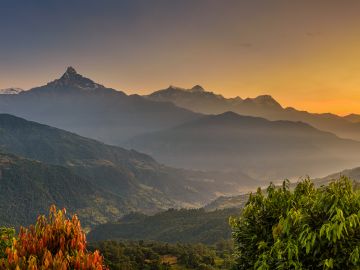
Annapurna to Chitwan: Walks & Wildlife
- Home
- Asia
- Nepal
- Walking & Trekking
- Annapurna to Chitwan: Walks & Wildlife
Start
Finish
Availability
Land Only Trip Price
Optional Single Supplement
Monday Sunday
16 Mar 2026 15 Mar 2026
Saturday Saturday
28 Mar 2026 28 Mar 2026
Availability
Guaranteed (Available)
Land Only Trip Price Usually USD 4873Now USD 4425Saving USD 448 Usually USD 4873Now Saving USD 448
Optional Single Supplement +USD 1800
Availability
This departure is available for new bookings and has reached the minimum number of passengers required to go ahead. Please click Continue to proceed with booking or contact our Sales team for assistance.
View Trip NotesSunday Saturday
05 Apr 2026 04 Apr 2026
Friday Friday
17 Apr 2026 17 Apr 2026
Availability
Guaranteed (Available)
Land Only Trip Price USD 4875
Optional Single Supplement +USD 1800
Availability
This departure is available for new bookings and has reached the minimum number of passengers required to go ahead. Please click Continue to proceed with booking or contact our Sales team for assistance.
View Trip NotesMonday Sunday
05 Oct 2026 04 Oct 2026
Saturday Saturday
17 Oct 2026 17 Oct 2026
Availability
Guaranteed (Available)
Land Only Trip Price USD 5100 Book with USD 1275 deposit Book with USD 500 deposit
Optional Single Supplement +USD 1823
Availability
This departure is available for new bookings and has reached the minimum number of passengers required to go ahead. Please click Continue to proceed with booking or contact our Sales team for assistance.
View Trip NotesMonday Sunday
12 Oct 2026 11 Oct 2026
Saturday Saturday
24 Oct 2026 24 Oct 2026
Availability
Available
Land Only Trip Price USD 5100 Book with USD 1275 deposit Book with USD 500 deposit
Optional Single Supplement +USD 1823
Availability
This departure is available for new bookings, and will be guaranteed to go ahead once it reaches minimum numbers. Please click Continue to proceed with booking or contact our Sales team for assistance.
View Trip NotesMonday Sunday
26 Oct 2026 25 Oct 2026
Saturday Saturday
07 Nov 2026 07 Nov 2026
Availability
Guaranteed (Available)
Land Only Trip Price USD 5100 Book with USD 1275 deposit Book with USD 500 deposit
Optional Single Supplement +USD 1823
Availability
This departure is available for new bookings and has reached the minimum number of passengers required to go ahead. Please click Continue to proceed with booking or contact our Sales team for assistance.
View Trip NotesMonday Sunday
02 Nov 2026 01 Nov 2026
Saturday Saturday
14 Nov 2026 14 Nov 2026
Availability
Available
Land Only Trip Price USD 5100 Book with USD 1275 deposit Book with USD 500 deposit
Optional Single Supplement +USD 1823
Availability
This departure is available for new bookings, and will be guaranteed to go ahead once it reaches minimum numbers. Please click Continue to proceed with booking or contact our Sales team for assistance.
View Trip NotesMonday Sunday
16 Nov 2026 15 Nov 2026
Saturday Saturday
28 Nov 2026 28 Nov 2026
Availability
Guaranteed (Available)
Land Only Trip Price USD 5100 Book with USD 1275 deposit Book with USD 500 deposit
Optional Single Supplement +USD 1823
Availability
This departure is available for new bookings and has reached the minimum number of passengers required to go ahead. Please click Continue to proceed with booking or contact our Sales team for assistance.
View Trip NotesMonday Sunday
23 Nov 2026 22 Nov 2026
Saturday Saturday
05 Dec 2026 05 Dec 2026
Availability
Available
Land Only Trip Price USD 5100 Book with USD 1275 deposit Book with USD 500 deposit
Optional Single Supplement +USD 1823
Availability
This departure is available for new bookings, and will be guaranteed to go ahead once it reaches minimum numbers. Please click Continue to proceed with booking or contact our Sales team for assistance.
View Trip NotesSunday Saturday
06 Dec 2026 05 Dec 2026
Friday Friday
18 Dec 2026 18 Dec 2026
Availability
Available
Land Only Trip Price USD 5100 Book with USD 1275 deposit Book with USD 500 deposit
Optional Single Supplement +USD 1823
Availability
This departure is available for new bookings, and will be guaranteed to go ahead once it reaches minimum numbers. Please click Continue to proceed with booking or contact our Sales team for assistance.
View Trip NotesMonday Sunday
01 Mar 2027 28 Feb 2027
Saturday Saturday
13 Mar 2027 13 Mar 2027
Availability
Available
Land Only Trip Price USD 5100 Book with USD 1275 deposit Book with USD 500 deposit
Optional Single Supplement +USD 1823
Availability
This departure is available for new bookings, and will be guaranteed to go ahead once it reaches minimum numbers. Please click Continue to proceed with booking or contact our Sales team for assistance.
View Trip NotesMonday Sunday
15 Mar 2027 14 Mar 2027
Saturday Saturday
27 Mar 2027 27 Mar 2027
Availability
Available
Land Only Trip Price USD 5100 Book with USD 1275 deposit Book with USD 500 deposit
Optional Single Supplement +USD 1823
Availability
This departure is available for new bookings, and will be guaranteed to go ahead once it reaches minimum numbers. Please click Continue to proceed with booking or contact our Sales team for assistance.
View Trip NotesMonday Sunday
22 Mar 2027 21 Mar 2027
Saturday Saturday
03 Apr 2027 03 Apr 2027
Availability
Available
Land Only Trip Price USD 5100 Book with USD 1275 deposit Book with USD 500 deposit
Optional Single Supplement +USD 1823
Availability
This departure is available for new bookings, and will be guaranteed to go ahead once it reaches minimum numbers. Please click Continue to proceed with booking or contact our Sales team for assistance.
View Trip NotesMonday Sunday
05 Apr 2027 04 Apr 2027
Saturday Saturday
17 Apr 2027 17 Apr 2027
Availability
Available
Land Only Trip Price USD 5100 Book with USD 1275 deposit Book with USD 500 deposit
Optional Single Supplement +USD 1823
Availability
This departure is available for new bookings, and will be guaranteed to go ahead once it reaches minimum numbers. Please click Continue to proceed with booking or contact our Sales team for assistance.
View Trip NotesMonday Sunday
12 Apr 2027 11 Apr 2027
Saturday Saturday
24 Apr 2027 24 Apr 2027
Availability
Available
Land Only Trip Price USD 5100 Book with USD 1275 deposit Book with USD 500 deposit
Optional Single Supplement +USD 1823
Availability
This departure is available for new bookings, and will be guaranteed to go ahead once it reaches minimum numbers. Please click Continue to proceed with booking or contact our Sales team for assistance.
View Trip NotesMonday Sunday
19 Apr 2027 18 Apr 2027
Saturday Saturday
01 May 2027 01 May 2027
Availability
Available
Land Only Trip Price USD 5100 Book with USD 1275 deposit Book with USD 500 deposit
Optional Single Supplement +USD 1823
Availability
This departure is available for new bookings, and will be guaranteed to go ahead once it reaches minimum numbers. Please click Continue to proceed with booking or contact our Sales team for assistance.
View Trip NotesMonday Sunday
04 Oct 2027 03 Oct 2027
Saturday Saturday
16 Oct 2027 16 Oct 2027
Availability
Available
Land Only Trip Price USD 5250 Book with USD 1312 deposit Book with USD 500 deposit
Optional Single Supplement +USD 1913
Availability
This departure is available for new bookings, and will be guaranteed to go ahead once it reaches minimum numbers. Please click Continue to proceed with booking or contact our Sales team for assistance.
View Trip NotesMonday Sunday
11 Oct 2027 10 Oct 2027
Saturday Saturday
23 Oct 2027 23 Oct 2027
Availability
Available
Land Only Trip Price USD 5250 Book with USD 1312 deposit Book with USD 500 deposit
Optional Single Supplement +USD 1913
Availability
This departure is available for new bookings, and will be guaranteed to go ahead once it reaches minimum numbers. Please click Continue to proceed with booking or contact our Sales team for assistance.
View Trip NotesMonday Sunday
25 Oct 2027 24 Oct 2027
Saturday Saturday
06 Nov 2027 06 Nov 2027
Availability
Available
Land Only Trip Price USD 5250 Book with USD 1312 deposit Book with USD 500 deposit
Optional Single Supplement +USD 1913
Availability
This departure is available for new bookings, and will be guaranteed to go ahead once it reaches minimum numbers. Please click Continue to proceed with booking or contact our Sales team for assistance.
View Trip NotesMonday Sunday
01 Nov 2027 31 Oct 2027
Saturday Saturday
13 Nov 2027 13 Nov 2027
Availability
Available
Land Only Trip Price USD 5250 Book with USD 1312 deposit Book with USD 500 deposit
Optional Single Supplement +USD 1913
Availability
This departure is available for new bookings, and will be guaranteed to go ahead once it reaches minimum numbers. Please click Continue to proceed with booking or contact our Sales team for assistance.
View Trip NotesMonday Sunday
15 Nov 2027 14 Nov 2027
Saturday Saturday
27 Nov 2027 27 Nov 2027
Availability
Available
Land Only Trip Price USD 5250 Book with USD 1312 deposit Book with USD 500 deposit
Optional Single Supplement +USD 1913
Availability
This departure is available for new bookings, and will be guaranteed to go ahead once it reaches minimum numbers. Please click Continue to proceed with booking or contact our Sales team for assistance.
View Trip NotesMonday Sunday
22 Nov 2027 21 Nov 2027
Saturday Saturday
04 Dec 2027 04 Dec 2027
Availability
Available
Land Only Trip Price USD 5250 Book with USD 1312 deposit Book with USD 500 deposit
Optional Single Supplement +USD 1913
Availability
This departure is available for new bookings, and will be guaranteed to go ahead once it reaches minimum numbers. Please click Continue to proceed with booking or contact our Sales team for assistance.
View Trip NotesMonday Sunday
06 Dec 2027 05 Dec 2027
Saturday Saturday
18 Dec 2027 18 Dec 2027
Availability
Available
Land Only Trip Price USD 5250 Book with USD 1312 deposit Book with USD 500 deposit
Optional Single Supplement +USD 1913
Availability
This departure is available for new bookings, and will be guaranteed to go ahead once it reaches minimum numbers. Please click Continue to proceed with booking or contact our Sales team for assistance.
View Trip NotesExtend Your Trip
Hiking the Kathmandu Valley Add-on Tour

The Kathmandu Valley, on the Himalaya foothills, is the ideal warm-up destination for your main Nepal or Bhutan adventure. Starting and ending in Kathmandu, this short trekking extension takes you along relatively low altitude trails, visiting rural villages and rhododendron forests, while serving up incredible views of Himalaya peaks. By the end, you’ll be ready to tackle a harder trek and eager to continue your journey of discovery.
The detailed itinerary is here, or speak to your sales representative for more details.
Reviews
Add ReviewYou may also like
The Adventure Begins Here
Get regular inspiration straight to your inbox from Exodus’ experts.



